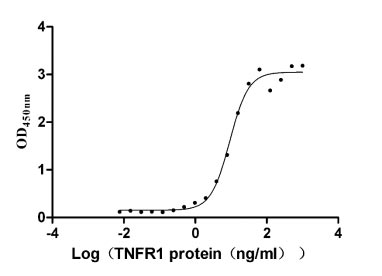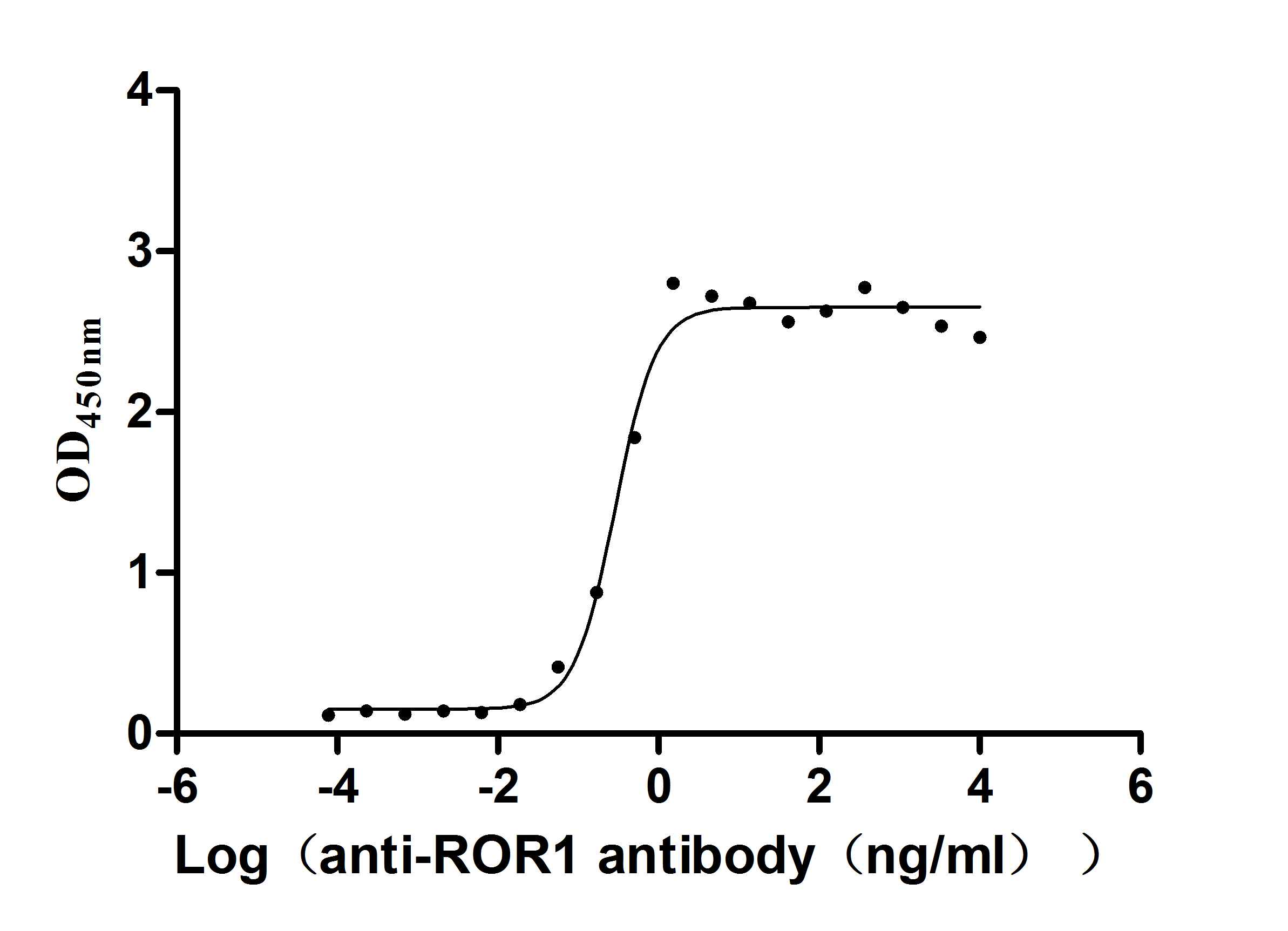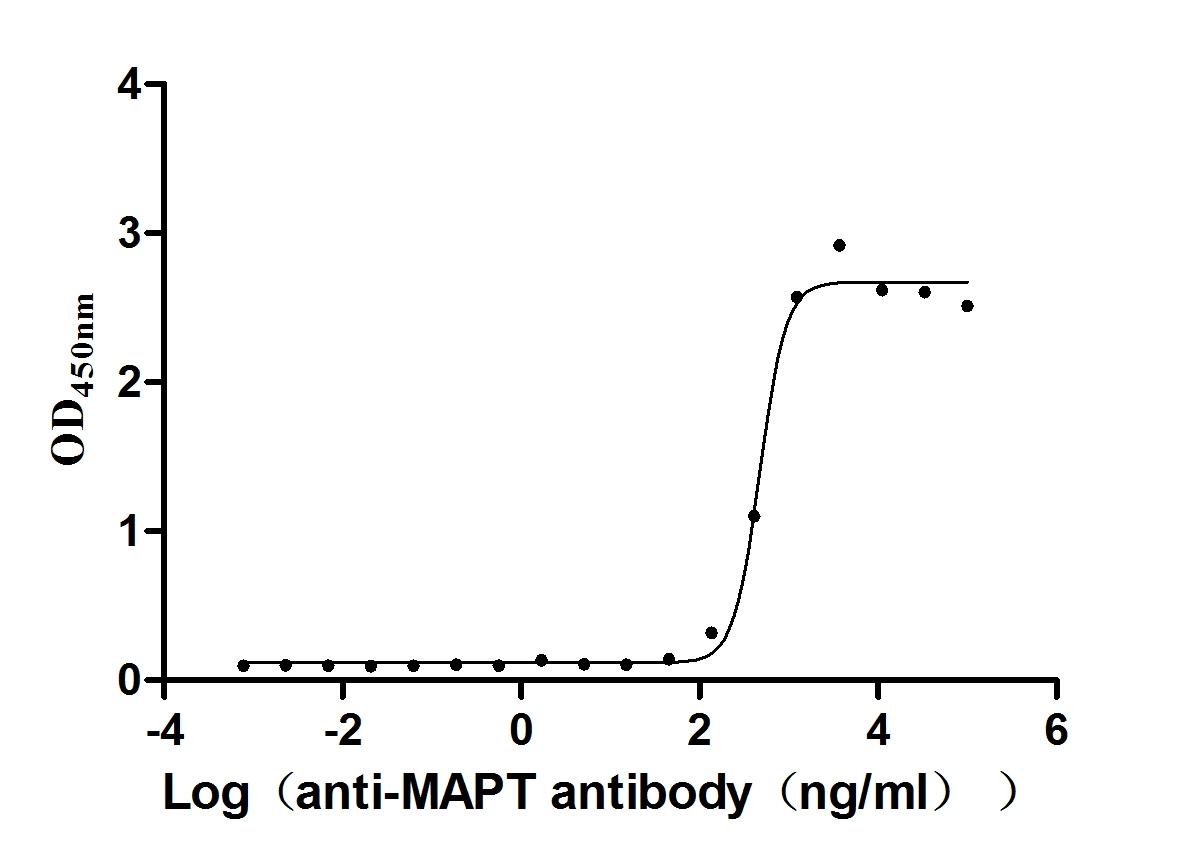Recombinant Human V-type proton ATPase 16 kDa proteolipid subunit (ATP6V0C)
-
中文名称:Recombinant Human V-type proton ATPase 16 kDa proteolipid subunit(ATP6V0C)
-
货号:CSB-CF002389HU
-
规格:
-
来源:in vitro E.coli expression system
-
其他:
产品详情
-
基因名:
-
Uniprot No.:
-
别名:ATP6V0C; ATP6C; ATP6L; ATPL; V-type proton ATPase 16 kDa proteolipid subunit; V-ATPase 16 kDa proteolipid subunit; Vacuolar proton pump 16 kDa proteolipid subunit
-
种属:Homo sapiens (Human)
-
蛋白长度:Full length protein
-
表达区域:1-155
-
氨基酸序列MSESKSGPEYASFFAVMGASAAMVFSALGAAYGTAKSGTGIAAMSVMRPEQIMKSIIPVV MAGIIAIYGLVVAVLIANSLNDDISLYKSFLQLGAGLSVGLSGLAAGFAIGIVGDAGVRG TAQQPRLFVGMILILIFAEVLGLYGLIVALILSTK
Note: The complete sequence including tag sequence, target protein sequence and linker sequence could be provided upon request. -
蛋白标签:N-terminal 10xHis-tagged
-
产品提供形式:Liquid or Lyophilized powder
Note: We will preferentially ship the format that we have in stock, however, if you have any special requirement for the format, please remark your requirement when placing the order, we will prepare according to your demand. -
缓冲液:Lyophilized from Tris/PBS-based buffer, 6% Trehalose, pH 8.0
-
储存条件:Store at -20°C/-80°C upon receipt, aliquoting is necessary for mutiple use. Avoid repeated freeze-thaw cycles.
-
保质期:The shelf life is related to many factors, storage state, buffer ingredients, storage temperature and the stability of the protein itself.
Generally, the shelf life of liquid form is 6 months at -20°C/-80°C. The shelf life of lyophilized form is 12 months at -20°C/-80°C. -
货期:Basically, we can dispatch the products out in 1-3 working days after receiving your orders. Delivery time may differ from different purchasing way or location, please kindly consult your local distributors for specific delivery time.Note: All of our proteins are default shipped with normal blue ice packs, if you request to ship with dry ice, please communicate with us in advance and extra fees will be charged.
-
注意事项:Repeated freezing and thawing is not recommended. Store working aliquots at 4°C for up to one week.
-
Datasheet & COA:Please contact us to get it.
相关产品
靶点详情
-
功能:Proton-conducting pore forming subunit of the membrane integral V0 complex of vacuolar ATPase. V-ATPase is responsible for acidifying a variety of intracellular compartments in eukaryotic cells.
-
基因功能参考文献:
- Results found that the expression of ATP6V0C was higher in prostate cancer (PC) cell lines with high metastatic potential than that with low metastatic potential, indicating that ATP6V0C enhanced metastatic capacity in prostate cancer cells. Its silencing effectively suppressed the migration and invasion of PC cells through the inhibition of the function of V-ATPase, not through a LASS2/TMSG1-dependent manner. PMID: 29138865
- RBP2 could induce epithelial-mesenchymal transition in esophageal cancer cells and exert a greater effect on the expression of E-cadherin in lung squamous cells than in esophageal squamous cells. PMID: 26264242
- Data show that 1-acylglycerol-3-phosphate O-acyltransferase 9 (AGPAT9) inhibit cell growth by regulating expression of KLF4/LASS2/V-ATPase proteins in breast cancer. PMID: 26110566
- The consequences of pharmacological inhibition of v-ATPase (by concanamycin) on proliferation, migration, VEGF-receptor 2 (VEGFR2) trafficking and signaling, as well as Notch-mediated transcription in endothelial cells, were examined. PMID: 24254321
- A role for ATP6V0C in maintaining constitutive and stress-induced ALP function. PMID: 24695574
- siRNA knockdown of ATP6V0C resulted in almost complete loss of infectious virus production, suggesting that an human cytomegalovirus microRNA targets a crucial cellular factor required for virus replication. PMID: 24385903
- Results show that inhibition of V-ATPase by archazolid reduces the activity of prometastatic proteases like cathepsin B in vitro and in vivo. PMID: 24166050
- results contribute to the conclusion that LASS2/TMSG1 could regulate V-ATPase activity and intracellular pH through the direct interaction of its homeodomain and the C subunit of V-ATPase PMID: 22991218
- data suggest that the bacterial effector VepA targets subunit c of V-ATPase and induces the rupture of host cell lysosomes and subsequent cell death. PMID: 22829766
- ATP6L has a protective role against SNP-induced autophagic cell death via inhibition of JNK and p38 in GSH-depleted glial cells. PMID: 21433058
- Novel recessive myoclonic epilepsy candidate gene myoclonic epilepsy , but no mutation was found. PMID: 21087195
- HRG-1 regulates V-ATPase activity, which is essential for endosomal acidification, heme binding, and receptor trafficking in mammalian cells. PMID: 19875448
- 16K expression inhibits beta(1) integrin surface expression and spreading on matrix by a novel mechanism that results in reduced levels of functional beta(1) integrin PMID: 15466867
- tumor acidity has a role in regulating inhibits the expression of ATP6L mRNA and protein in breast tumor cells PMID: 19299075
显示更多
收起更多
-
亚细胞定位:Vacuole membrane; Multi-pass membrane protein.
-
蛋白家族:V-ATPase proteolipid subunit family
-
数据库链接:
HGNC: 855
OMIM: 108745
KEGG: hsa:527
STRING: 9606.ENSP00000329757
UniGene: Hs.389107
Most popular with customers
-
Recombinant Human Tumor necrosis factor receptor superfamily member 1A (TNFRSF1A), partial (Active)
Express system: Mammalian cell
Species: Homo sapiens (Human)
-
Express system: Mammalian cell
Species: Homo sapiens (Human)
-
Recombinant Mouse Microtubule-associated protein tau (Mapt) (Active)
Express system: Mammalian cell
Species: Mus musculus (Mouse)
-
Recombinant Rabbit Tissue factor pathway inhibitor (TFPI) (Active)
Express system: Mammalian cell
Species: Oryctolagus cuniculus (Rabbit)
-
Recombinant Human Tomoregulin-2 (TMEFF2), partial (Active)
Express system: Mammalian cell
Species: Homo sapiens (Human)
-
Recombinant Human C-type lectin domain family 4 member C (CLEC4C), partial (Active)
Express system: Mammalian cell
Species: Homo sapiens (Human)
-
Recombinant Human Cadherin-6(CDH6),partial (Active)
Express system: Mammalian cell
Species: Homo sapiens (Human)
-
Recombinant Human Tumor necrosis factor ligand superfamily member 15(TNFSF15) (Active)
Express system: Mammalian cell
Species: Homo sapiens (Human)









-AC1.jpg)










